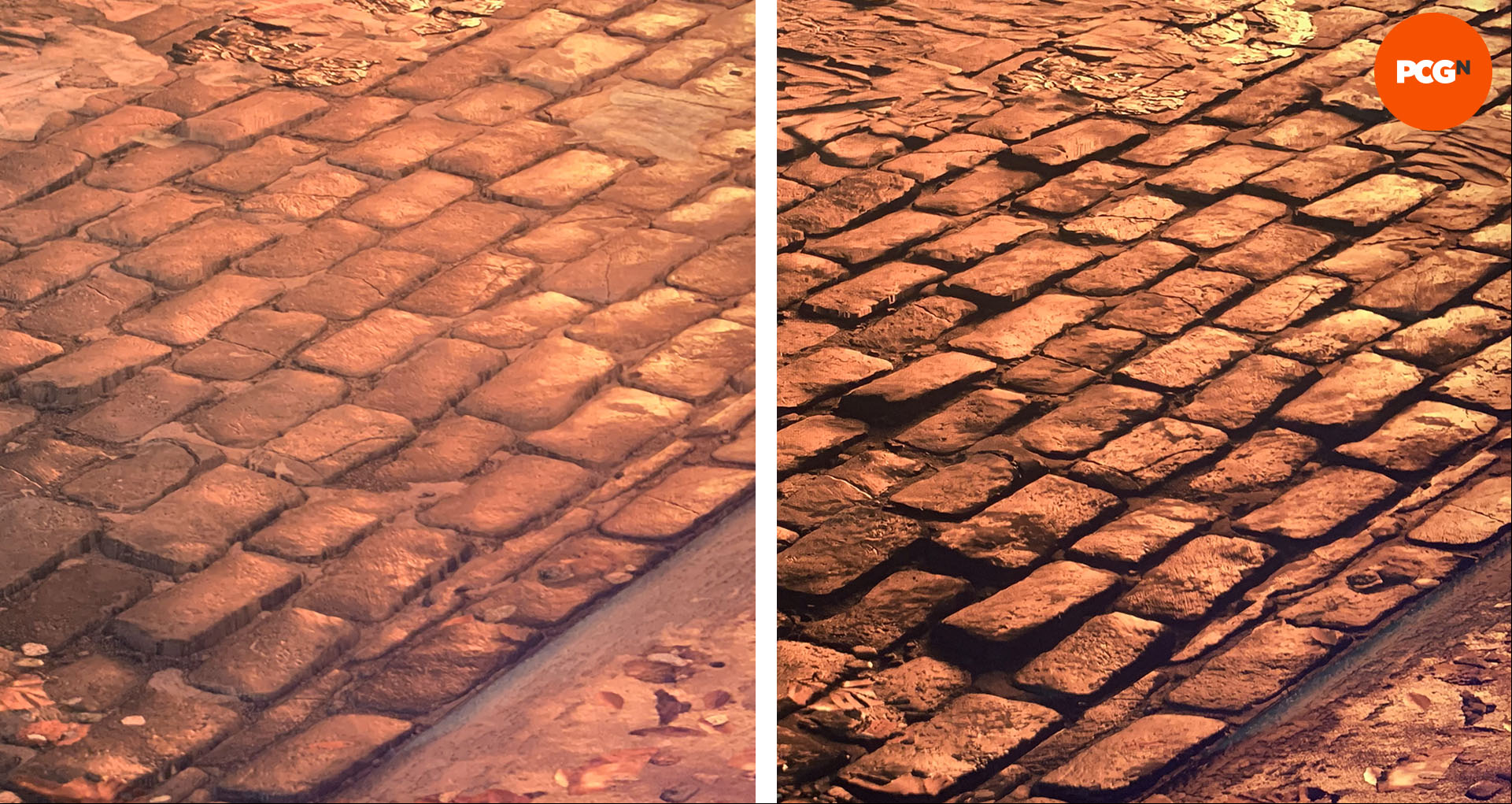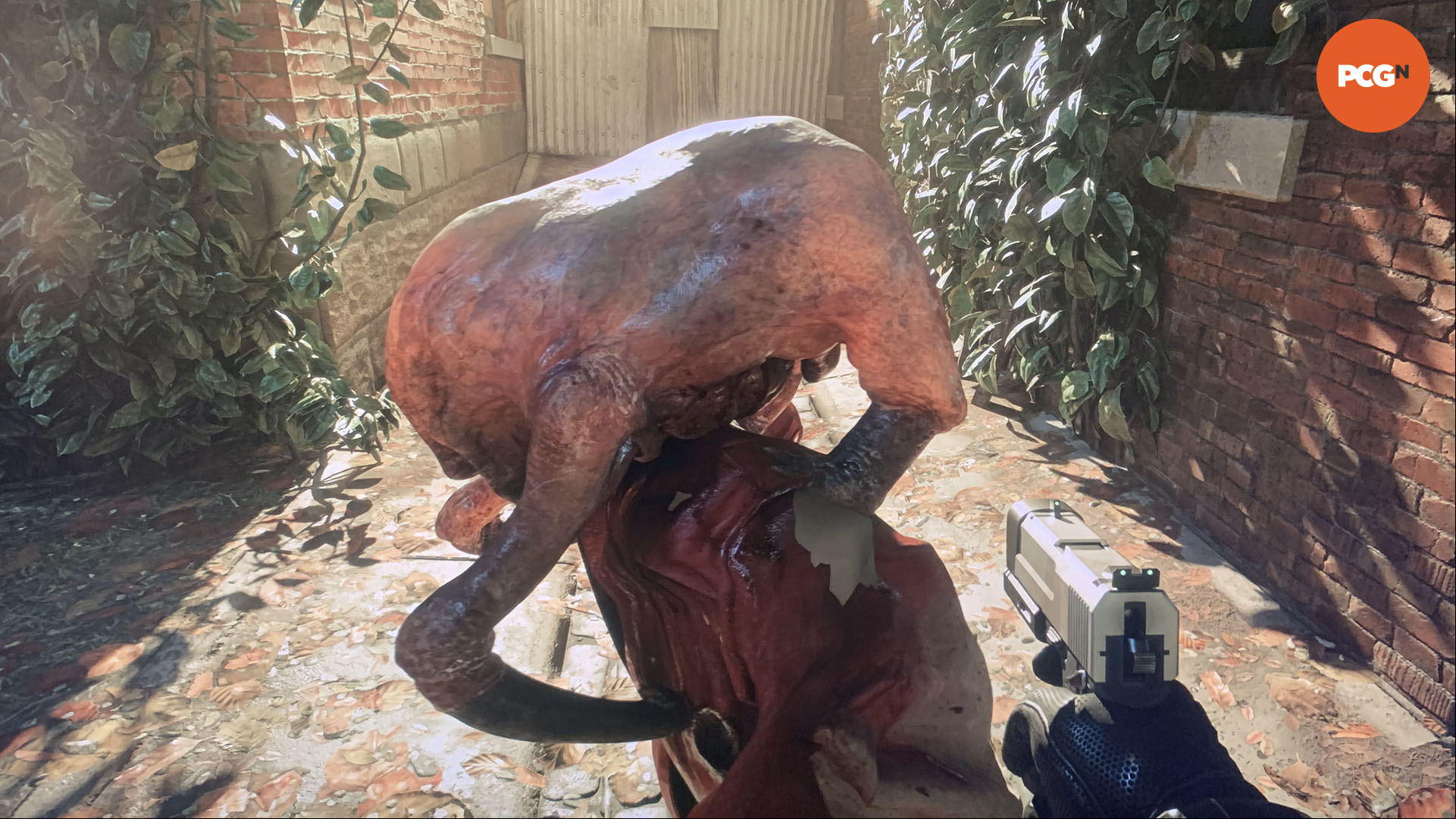Gordon Freeman's classic toxic crowbar adventure is about to get even more realistic, as the Half-Life 2 RTX Remix project is working on adding Nvidia neural rendering to the game, in addition to ray tracing. I had a chance to play the game with the new tech on an Nvidia GeForce RTX 5090, and it looks damn fine.
Many of the technical details of RTX 5090 review, where you can see how well the card performs in other games.
Let's start with the paving on this street. It already looks good with ray tracing enabled in the image on the left, with the colors of the bricks changing in accordance with the lighting in the scene, and the shadows showing the depth of the bricks. However, once you enable Nvidia's Neural Radiance Cache, on the right, the image really jumps to life, with much more realistic shadowing and depth to the bricks, and to the debris on the street.

The trick here is Nvidia's use of AI to work out indirect light. It basically bounces the indirect lighting in the scene multiple times, inferring the information from the initial one or two bounces you get from path-traced rays at first.
It's genuinely clever, and it uses AI in real time to work it all out – there are basically loads of neural networks processing the game data live as you play, learning what's in the scene from the pixels sent to them, so when a ray reaches the cache it can infer multiple light bounces from the AI, resulting in much more depth to the scene.
Next let's look at one of the classic Half-Life 2 headcrab zombies, which demonstrates the benefits of using Nvidia's new subsurface scattering tech to calculate the translucency of materials and skin, as shown in the image below.

Basically, this tech uses AI to calculate the way light bounces off and through translucent surfaces such as skin, and it works really well, even on a headcrab. Not only does the sunlight bouncing off the character look realistic, but you can also see the translucency of the skin, with it glowing a pinky red at the back, and the veins showing through.
This tech will also form a part of Nvidia's RTX Neural Faces tech, which aims to make human faces look realistic to the point where it fools the human eye, and avoids the uncanny valley syndrome where people know a face doesn't look quite right.
Half-Life 2 RTX Remix is also getting for Nvidia Multi Frame Gen with DLSS 4, which resulted in the frame rate going from 110fps to 202fps on the test machine we tried, and I couldn't see any visual artifacts as a result. Both RTX Skin with subsurface scattering and Neural Radiance Cache are going to be available to RTX Remix as well, so we may well see other old games revitalized with this accurate lighting tech.
In the meantime, check out our guide to the RTX 5000 guide to see what's coming soon with the new Nvidia Blackwell GPU lineup.
